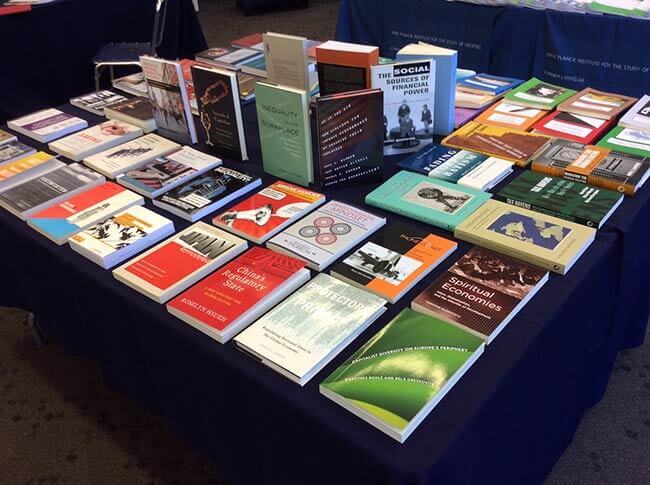|
|||||||||
Cornell University Press exhibits through Library of Social Science’s 2016 Promotional Package, which includes exhibiting at each of our 2016 conferences—as well as book promotions to our database of 40,000 scholars, professionals and students throughout the world.
Between 1945 and 1950, the United States had a global nuclear monopoly. The A-bomb transformed the nation’s strategic airpower and saw the Air Force displace the Navy at the front line of American defense. In To Kill Nations, Edward Kaplan traces the evolution of American strategic airpower and preparation for nuclear war from this early air-atomic era to a later period (1950–1965) in which the Soviet Union’s atomic capability, accelerated by thermonuclear weapons and ballistic missiles, made American strategic assets vulnerable and gradually undermined air-atomic strategy. The shift to mutually assured destruction (MAD) via general nuclear exchange steadily took precedence in strategic thinking and budget allocations. Soon American nuclear-armed airborne bomber fleets shaped for conventionally defined—if implausible, then impossible—victory were supplanted by missile-based forces designed to survive and punish. The Air Force receded from the forefront of American security policy. Kaplan throws into question both the inevitability and preferability of the strategic doctrine of MAD. He looks at the process by which cultural, institutional, and strategic ideas about MAD took shape and makes insightful use of the comparison between generals who thought they could win a nuclear war and the cold institutional logic of the suicide pact that was MAD. Kaplan also offers a reappraisal of Eisenhower’s nuclear strategy and diplomacy to make a case for the marginal viability of air-atomic military power even in an era of ballistic missiles We urge you to purchase the book for yourself and/or your college library. Click the link to the above for ordering information. Reviews "In To Kill Nations Edward Kaplan describes a long process of evolution and adaptation as U.S. political and military leaders grappled with integrating nuclear weapons into national defense after World War II. Strikingly, he sees not a sudden revolution but a gradual process of incremental changes in military preparedness policy and action." "Edward Kaplan has written a first-rate account of the evolution of America's air-atomic strategy, a subject overlooked by contemporary scholars and policymakers and, most important of all, airmen themselves. Drawing on a wide variety of literatures that inform the study of airpower, nuclear deterrence, and the Cold War, he carefully examines the puzzles that plagued the Truman, Eisenhower, and Kennedy administrations as they struggled to come to terms with the advent of atomic weapons and
the conduct of war. As the title implies, the story here is nothing less than the killing of nations; this is a topic neglected at our peril. This book should be read by all those interested in airpower, nuclear strategy, war, and peace." Table of Contents Introduction 1. Antecedents 2. Declaration, Action, and the Air-Atomic Strategy 3. Finding a Place 4. The Fantastic Compression of Time 5. To Kill a Nation 6. Stalemate, Finite Deterrence, Polaris, and SIOP-62 7. New Sheriff in Town 8. End of an Era Conclusion Key to Sources and Abbreviations |
|||||||||
|
|||||||||

